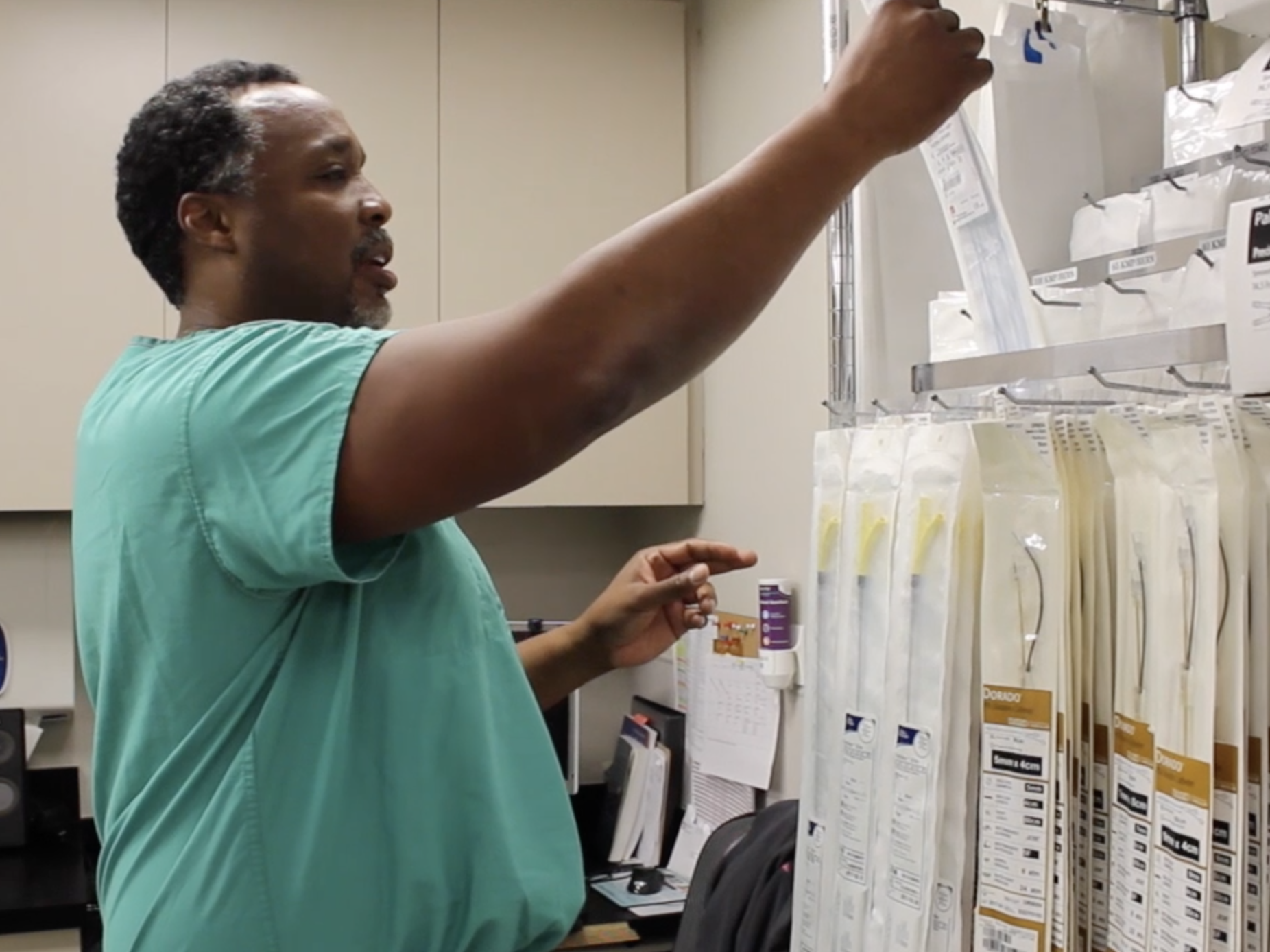Aortoiliac Occlusive Disease
 The aorta is the largest and most important blood vessel in the body, transporting nutrient-rich blood from the heart down through the abdomen where it branches out into the iliac arteries and then moves downward through the pelvis into the lower legs.
The aorta is the largest and most important blood vessel in the body, transporting nutrient-rich blood from the heart down through the abdomen where it branches out into the iliac arteries and then moves downward through the pelvis into the lower legs.
Aortoiliac occlusive disease (AIOD) is a condition that arises as a result of two other blood disorders: peripheral arterial disease (PAD) and atherosclerosis. After the blood vessels in the upper leg, the aorta and iliac arteries are the second most commonly affected blood vessels by PAD.
What Causes Aortoiliac Occlusive Disease?
Over time, plaque can build up in the abdominal aorta, become thick, and restrict the blood flow in the iliac arteries, causing them to harden (a phenomenon called atherosclerosis). It is atherosclerosis that is primarily responsible for AIOD.
The most prevalent causes of atherosclerosis are:
- Smoking
- High blood pressure
- Obesity
- Elevated cholesterol
- Family history of atherosclerosis
Certain inflammatory diseases (such as Takayasu’s arteritis) and radiation around the pelvic area can generate swelling in the walls of the arteries resulting in blockages.
For aortic rupture, in which all 3 layers of the aorta are disrupted, the mortality rate is up to 80%.
What are Symptoms of Aortoiliac Occlusive Disease?
Roughly half of all patients with PAD and, consequently, AIOD, show no symptoms of the illness, making it difficult to determine the extent and prevalence of the condition.
However, as AIOD evolves and blood blockages build up, patients can experience increasing pain in the legs, also known as intermittent claudication (pain caused by minimal blood flow usually resulting from exercise) and can also develop slow-healing ulcers. In its most extreme form, this is known as critical limb ischemia (CLI).
Some male patients may also experience erectile dysfunction as a result of AIOD.
Diagnosis and Treatment of Aortoiliac Occlusive Disease
 Diagnosis is achieved through a physical exam by a board-certified vascular surgeon. A thorough evaluation of the patient’s personal and family medical history will be conducted and, if necessary, imaging tests ordered to determine exactly where the blockages are located.
Diagnosis is achieved through a physical exam by a board-certified vascular surgeon. A thorough evaluation of the patient’s personal and family medical history will be conducted and, if necessary, imaging tests ordered to determine exactly where the blockages are located.
Treatment for AIOD can include managing risk factors, endovascular surgery or other minimally invasive surgical interventions.
Recognizing and diminishing risk factors can go a long way toward alleviating symptoms, avoiding surgery, and prolonging life. Vascular physicians will typically recommend that their patients:
- Quit smoking
- Control cholesterol
- Manage high blood pressure and diabetes
- Eat healthy
- Exercise regularly
- Take aspirin or other medications to prevent blood clotting.
If nonoperative methods fail to resolve the problem, one’s surgeon may recommend angioplasty, vascular bypass and/or stent grafting procedures to alleviate the symptoms.
Recovery and Prevention of Aortoiliac Occlusive Disease
Most patients do very well after AIOD treatment. However, regular follow-up with one’s vascular specialist is crucial for long-term success and prevention. In the first year after surgery, patients should visit their doctors at least twice, if not more, and once or twice per year thereafter.
The most successful strategies for the prevention of AIOD are to stop smoking or to adopt a quit-smoking program, eat a well-balanced diet and less fatty foods, and control blood pressure and diabetes. Staying active and getting regular exercise are also key prevention factors.

